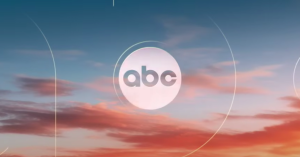Americans are growing increasingly desperate for another economic relief bill — including a stimulus check — but it is not always clear who they should be counting on to provide that funding. The first round of stimulus checks back in April cost the U.S. government about $300 billion. According to a report by CNBC, that money was essentially borrowed and “printed” just for this purpose.
This explanation comes from Vice President of Altamont Capital Partners and financial educator Sahil Bloom. Bloom said that the government created the money needed for these stimulus checks with the authorization of the U.S. Congress. While it was not really “printed,” it was added digitally, as Bloom explains: “we live in a digital age. So really, money is just numbers on a screen.” Still, that money is technically borrowed so as not to disrupt the value of the dollar itself.
Videos by PopCulture.com
“You can go crazy with the details trying to figure this all out, but it’s really quite simple,” Bloom said. “We [The U.S.] run a deficit, which means we spend more than we bring in. So where does all this money come from? Well, in simple terms, we borrow it.”
This undertaking required the cooperation of the United States Senate, House of Representatives, Department of the Treasury and the Federal Reserve. Bloom said that “Congress jockeys over the legislation and authorizes the bill… They pass it along to the treasury department,” where the value of this newly printed money is determined.
“So, the Treasury issues bonds, bills and notes, which are essentially just IOUs,” he explained. “They’re issuing a promise to pay back the borrowed money later, with a little bit of interest. The buyers of these IOUs, who are providing the loaned money, can really be anyone — individuals, institutions, sovereign governments — but the big one that everyone talks about today is the Fed.”
As Bloom puts it, the Federal Reserve — or “Fed” — is the only institution with the somewhat “magical” power to “create money.”
“Essentially, they can simply click a button on the screen and ‘credit’ the Treasury Department with the money,” he said. However, the Fed is responsible for keeping track of the money in the form of those bonds and other “IOUs,” counting them as assets on the Fed’s balance sheet, but debt on the U.S. government’s part.
“That balance sheet has ballooned this year to over $7 trillion,” Bloom said. “So, the clear worry here is about inflation.” Bloom explained that the pandemic itself makes sure that inflation is not a huge concern right now, even with the creation of all this new money. Simply put, the critics of all this spending are only speculating that at some point in the future, the government will continue to create new money in this way without accounting for the national deficit.
In the meantime, the economic impact of the coronavirus pandemic functions as a “hole,” which sucks in all of the money produced by the stimulus checks — and then some, in many cases. Americans can rest assured that another round of stimulus checks is not likely to upset the economic balance of supply and demand.









